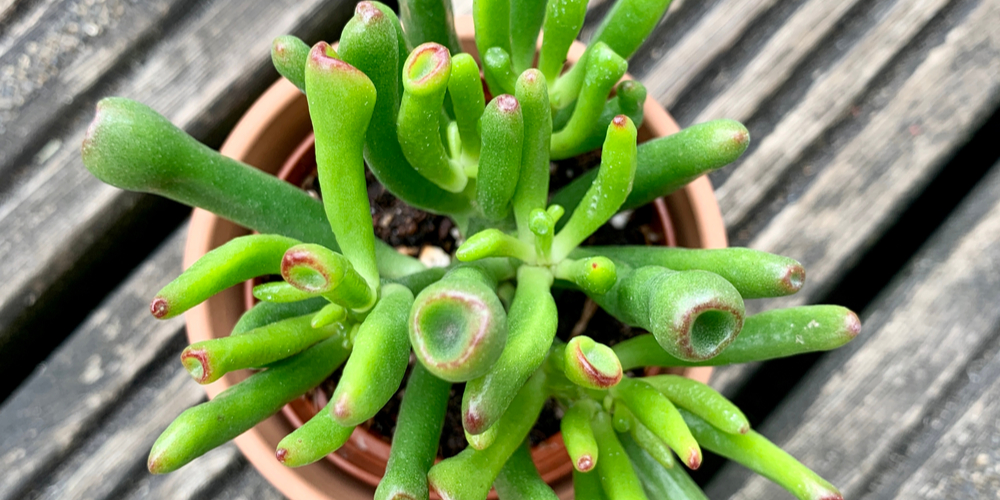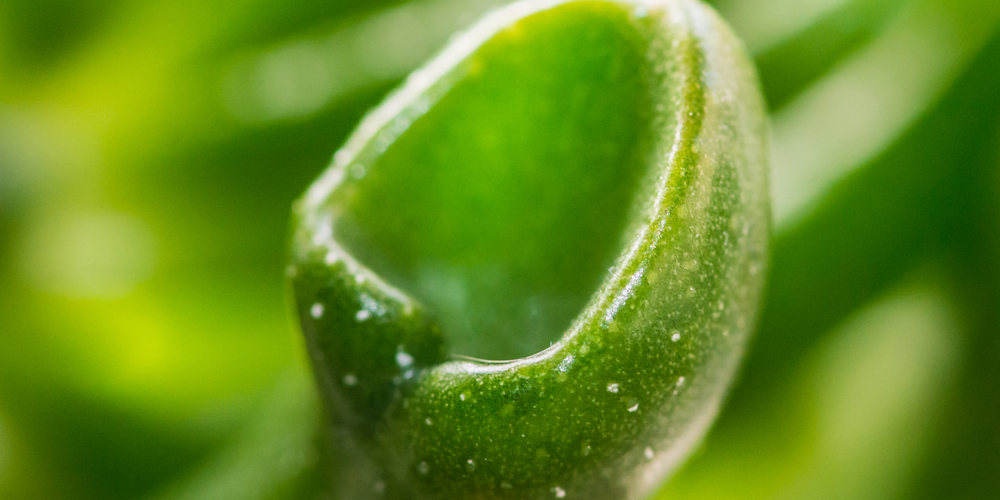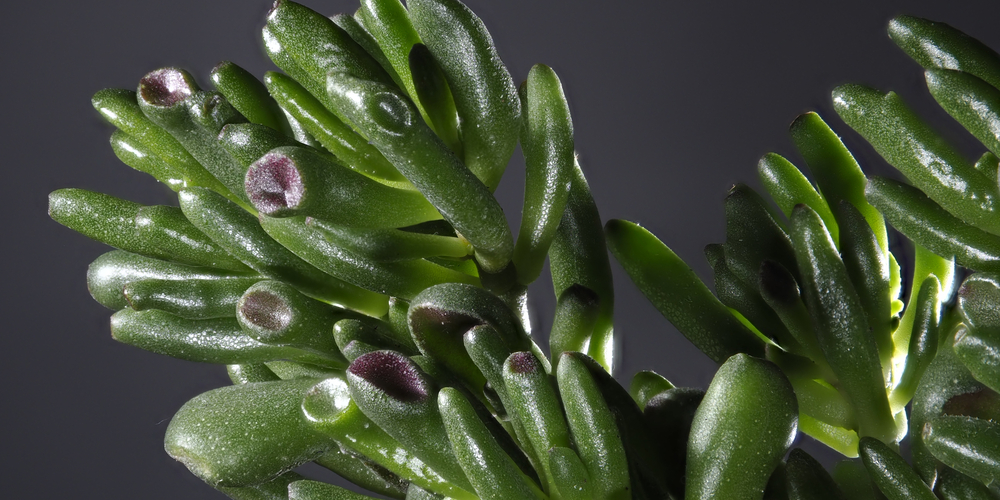Ogre ear jade (Crassula Ovata), also known as the Gollum Jade or Finger plant, is a variant of the Jade (Crassula Ovata) plant succulent that’s known for its disfigured look hence the name Gollum (referenced from JRR Tolkien’s books). Tolkien’s Lord Of The Rings series of books (and movie adaptation) mentions Gollum, a hobbit with physical disfiguration resulting from an unfortunate series of mishaps.
What is an Ogre Ear Succulent?

The plant has long, tubular leaves with puckered ends similar to suction cups. The leaves are green and have a reddish tinge on the tips. The plant’s flowers are star-shaped and pink or white. The plant is so similar to the Hobbit plant (also taken from JRR Tolkien’s Lord Of The Rings) that the names are often interchangeable.
- Botanical name: Crassula Ovata
- Common names: Hobbit jade, Spoon jade, ET’s fingers, Trumpet jade
- Temperature requirement: Has the best growth in mild climates (USDA zone 9, 10, and 11). Bring the plant indoors during winter.
- Water requirement: Ogre Ear Jade requires low to moderate watering. Water when the soil is dry (summer) or when the leaves begin shriveling (winter).
- Light requirement: Requires bright, indirect, or direct sunlight (shelter the plant from intense sunlight).
- Mature size: Can grow up to 5 ft tall and 3 ft wide after years of growing outdoors. They reach 6″ to 12″ when grown indoors.
- Seasonal interest: Mature spoon jade can form pink flowers when grown outdoors.
Is the Ogre Ear Jade an outdoors or indoors plant?
Crassula Ovatas can be grown both indoors and outdoors. One necessary condition is to provide the plant with a well-draining potting mix and enough sunlight. It would be best to protect them from too much water (don’t overwater them) and frost. For instance, all the soil in the pot should be dry before watering.
Where to place it
As mentioned earlier, you could grow your jade plant outdoors; however, they are more beneficial when grown indoors. You should place the plant in a spot that receives bright light (either directly or indirectly). You could place it near a west-facing or south-facing window to get the maximum amount of sunlight.
You should plant the jade (when planting it in the garden) or position it (when planting it in a pot) in locations that are sheltered from strong winds or baking heat. Jades grow well indoors and outdoors and can tolerate areas with less sunlight as long as their soil is dry.
How to use the Ogre Ear Jade
You can use the ogre ear jade to accent your space and make it greener. You could grow it in a pot and place it on your desk, tabletop, or bookshelf. Or, you could mix it with other plants. The plant grows over the years and forms a thick trunk that you can cultivate as a bonsai. It would be best if you planted the jade behind a low-water border for textural foliage interest and height.
Caring for the Ogre Ear Succulent
The ogre ear jade needs almost no care except for some occasional watering. The plant has few pests, isn’t affected by fertilizer, and doesn’t require special treatment. All you have to do is take care not to overwater it. You only need to water it once a week in the summer or spring when the soil feels dry.
Remember that plants in bright but indirect sunlight dehydrate slower than those in direct sunlight. Thus, it would be best if you regulated your watering depending on where the plant is placed, the current climate, and the season. As mentioned before, you should bring your jade indoors for the winter; however, you should still ensure that you place it somewhere with access to bright light.
Soil
As mentioned before, ogre ear jade plants need well-draining soil for proper growth. You could use an easy mixture of cactus potting and perlite in the ratio of 2:1 for extra drainage. If you can’t get some perlite, you can add the cactus mix to coarse sand in the 2:1 ratio. You could also use cactus mix, coarse sand, and perlite in a 1:1:1 ratio.
Watering
There isn’t a set schedule for watering your ogre-ear jade plant. You’ll have to wing it. You can water it every 7 to 10 days in hot summers and once every 10 to 14 days in the spring or fall. Water the plant once every three to four weeks, depending on how dry the soil is.
People who live in humid locations don’t have to water their jade plants as much. You’ll need to be observant and gauge if your plant needs water by how its leaves look. Decrease or increase your watering as needed.
FAQ
Why are my ogre ears falling off?
There are two reasons why a jade plant shades its leaves—Overwatering and underwatering. Underwatering your jade plant can be dangerous for your plant if they are left in intense sunlight. Your plant’s leaves will shrivel up and fall off if they lose more water than they can absorb from the soil. As mentioned, your ogre ears could also fall off if you water the jade plant with more water than required. Ensure that you maintain a regular but adequate watering schedule.
How does an under-watered jade plant look?
Under watered jade have and wrinkled leaves. Extended periods of underwatering (or lack of watering) cause the leaves to dry up and die. You’ll notice lots of dead leaves at the base of the plant.
You can revive the dying succulent by digging it out of the soil and removing any excess soil stuck to the roots. Next, cut off any black or brown roots (they are rotten) and leave the plant on a strainer until its roots have dried completely (it may take two or three days). Plant it back when the roots are completely dry.
Conclusion
Caring for your ogre ear succulent is quite easy. You don’t have to care for it as much as you would other plants. The plant looks great indoors and outdoors and could be a great addition to your home. Have fun cultivating your ogre ear jade plant!

